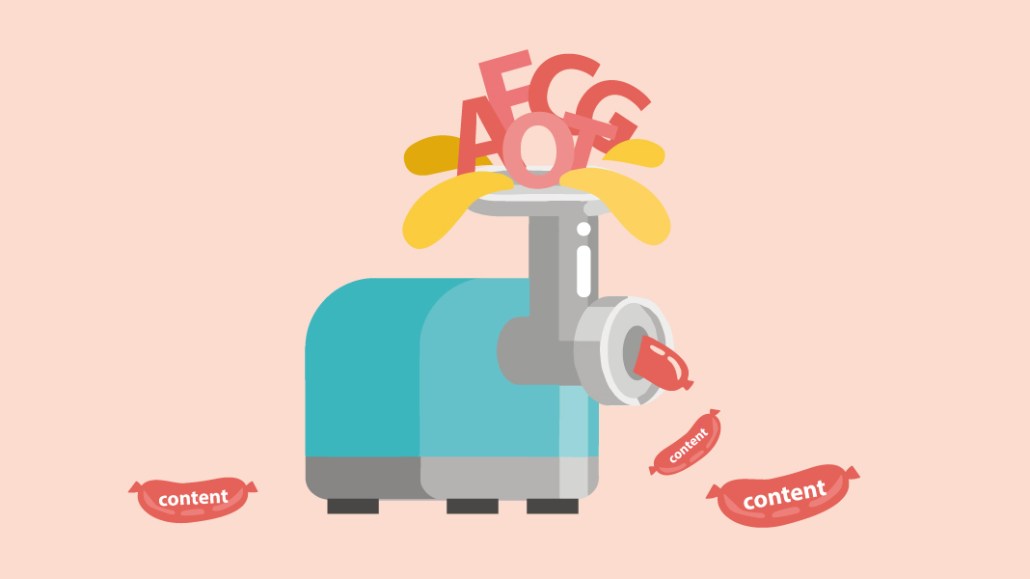Register by Jan 13 to save on passes and connect with marketers from Uber, Bose and more
‘That innovation budget has gone’: Publishers adapt to thwarted branded content studio growth

Back at the beginning of the year, specialist publisher Dennis Publishing expected to grow its branded content studio by 30% in 2020, powered by reaching different clients in new business areas beyond its core client base which include car manufacturers, cycling specialists and finance brands. Like most publishers, the pandemic has put the kibosh on those growth ambitions.
Now with uncertainty as the only constant, clients want to build on their most trusted relationships where they’ve previously seen results. That’s particularly true in branded content, where effective deliverables and returns have taken longer to define.
“Every pound and penny is being scrutinized,” said Jonathan Kitchen, chief revenue officer at Dennis Publishing, home to titles like Auto Express and Carbuyer. “We’re working on longer-term partnerships where we have shown results, like in motoring and cycling. A few content briefs have flipped to reach or response because it’s the results that clients want to see. We’re not seeing speculative briefs, it’s about sticking to your knitting.”
Dennis expects branded content revenues to be flat compared with last year, partly because it has core specialisms in passion areas, having a clearly defined and active audience makes it an easier sell for brands.
Across board branded content revenue for publishers will be down between 20% and 40% this year, according to tech company Polar, which helps publishers with branded content and native advertising. That’s tough to swallow considering that, for many, up to 40% of digital ad revenue comes from branded content.
The number of campaigns run through Polar’s publisher network of hundreds of publishers was down minus 22% in April compared with March. That has yet to rebound as June and July are flat.
“I can’t think of a single publisher back in February that didn’t have revenue growth plans in the 10% to 20% range,” said Polar CEO Kunal Gupta. “Part of that growth involved investment, that investment is no longer available, for some it would have been for different skills or different types of content, now that innovation budget has gone and they have to retool existing budgets or find it elsewhere.”
Compared to the boom of performance-based, direct reader-revenue lines — like subscriptions — and the rollercoaster of programmatic marketing, the future of branded content advertising revenue has been less clear cut. Publishers are being clear-eyed about what works. Challenges like low margins on expensive shoots, more complicated consultative selling processes, longer lead times or tensions between editorial and commercial, have been exacerbated.
Due to coronavirus fallout, Dennis has decentralized its branded content sales under category pillars after making staff cuts. While it’s efficient for sales teams to sell a suite of products, decentralizing gets rid of the expertise. To counter that concern, it’s giving teams more education and training, adding more meetings between sales and content delivery teams, critiquing workflows and increasing use of Jira project management software.
As the pandemic has rumbled on, the number of shorter-form branded content campaigns, typically costing under $25,000, has grown. More bite-sized timely and targeted content costs less and is quicker to turn around, although it keeps content delivery teams just as busy for less money. Last week, News UK launched The Times Social Studio (following The Sun’s Social Studio last year) offering quick edit newsroom video capabilities for clients who want to reach the title’s audiences on Facebook, Instagram and YouTube.
One global news publisher, asking for anonymity, pointed out that the number of people involved in client-side campaign signed off has increased, making the process longer and less lucrative. In any case, branded content campaigns are low margin projects for publishers because they have to provide a high degree of service to match the high price tag. During the pandemic, publishers — and platforms — have dropped their pieces by between 10% and 20%, for others, this is between 40% and 50%, said Polar’s Gupta.
Spending on native advertising halved to $23 million at the end of March from $40 million in February, according to Mediaradar research, down 31% from 2019, as hundreds of advertisers quit the format.
And as the number of branded content campaigns has decreased, so has the ticket price. One tier-one U.S. news publisher which typically runs branded content campaigns for national and local advertisers — the former being many multitudes higher than local campaigns — joked that national advertiser campaigns are now the size of local campaigns.
As publishers’ branded content studios have matured, larger entities introduced minimum pricing of $60,000 or $100,000 per campaign to help manage margins. With coronavirus, those thresholds have gone out the window and publishers have taken on smaller campaigns in hopes they grow into bigger partnerships in the fourth quarter.
But for now, longer-form, splashy multi-media spreads that typically cost over $150,000 are few and far between, according to Polar. Though there is some hope that is starting to change as Dennis has had a couple larger projects come in ahead of the year’s end.
More in Media

Why publishers are building their own creator networks
Publishers are forming creator networks to regain control, combat traffic declines, and reach audiences shifting toward influencers.

The accidental guardian: How Cloudflare’s Matthew Prince became publishing’s unexpected defender
Cloudflare’s day job is fending off botnets and nation-state cyberattacks, not debating how Google and other AI firms crawl publisher sites.

A timeline of the major deals between publishers and AI tech companies in 2025
Here’s a list of all the major deals signed between publishers and AI tech companies in 2025.








